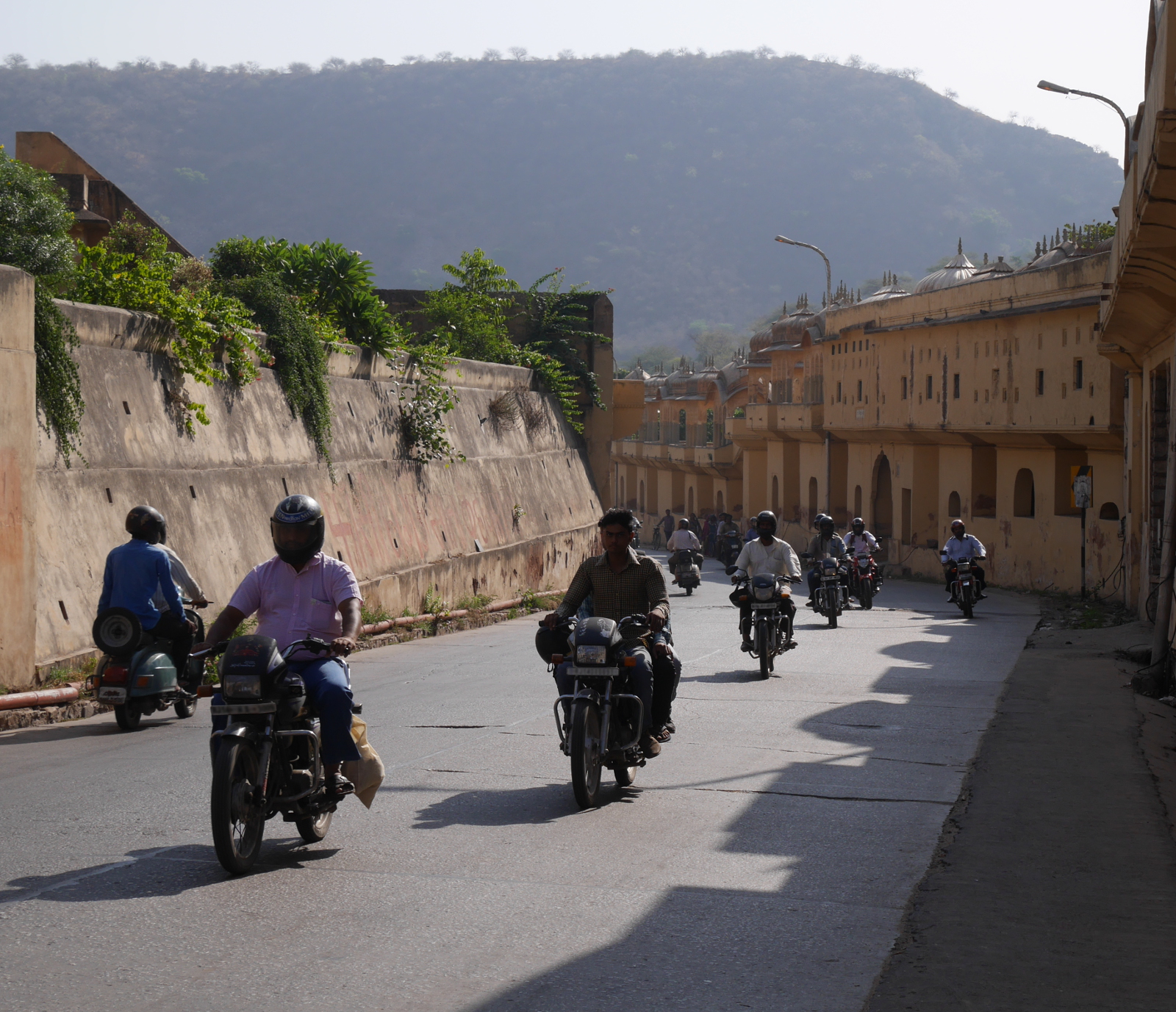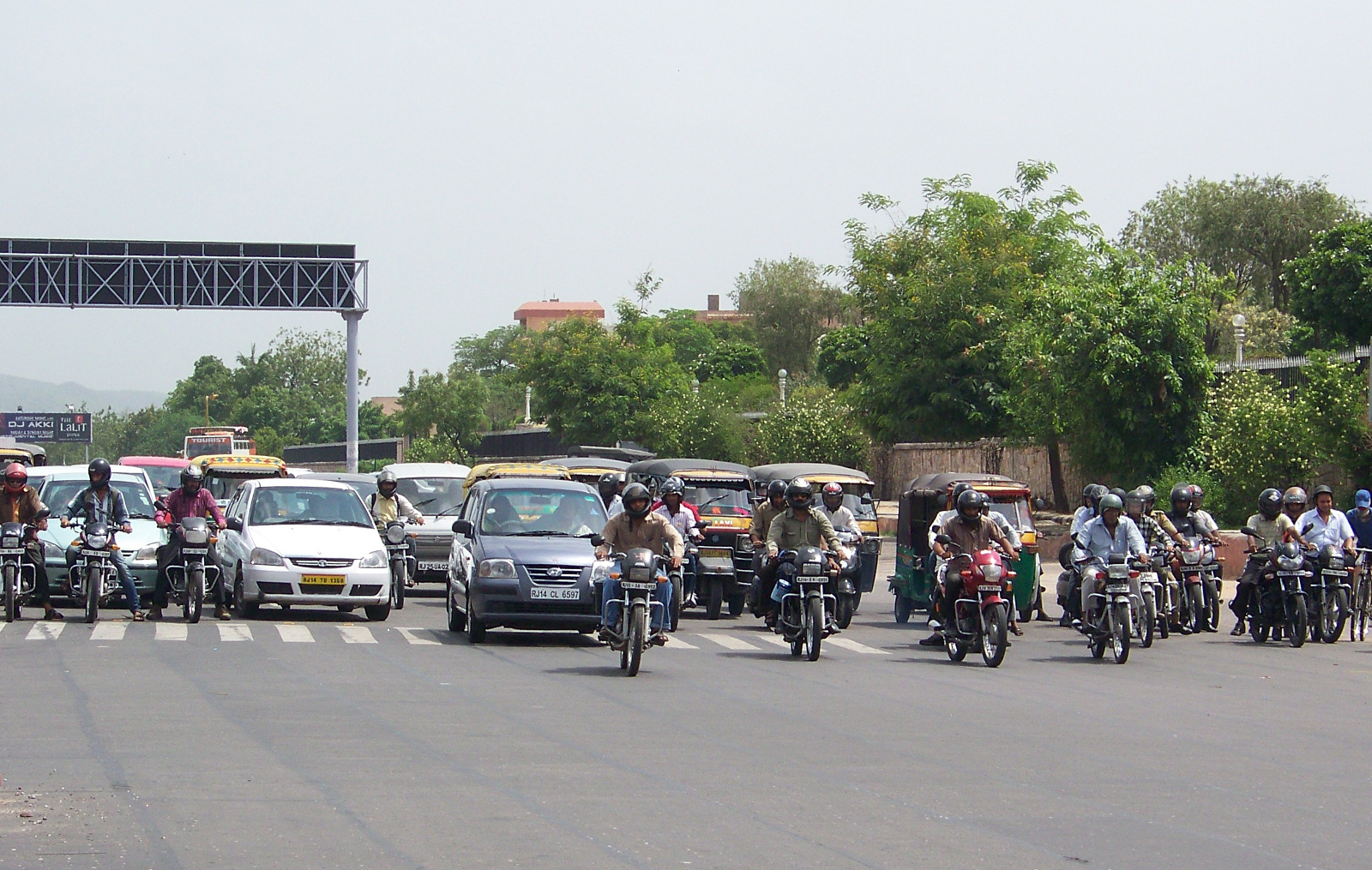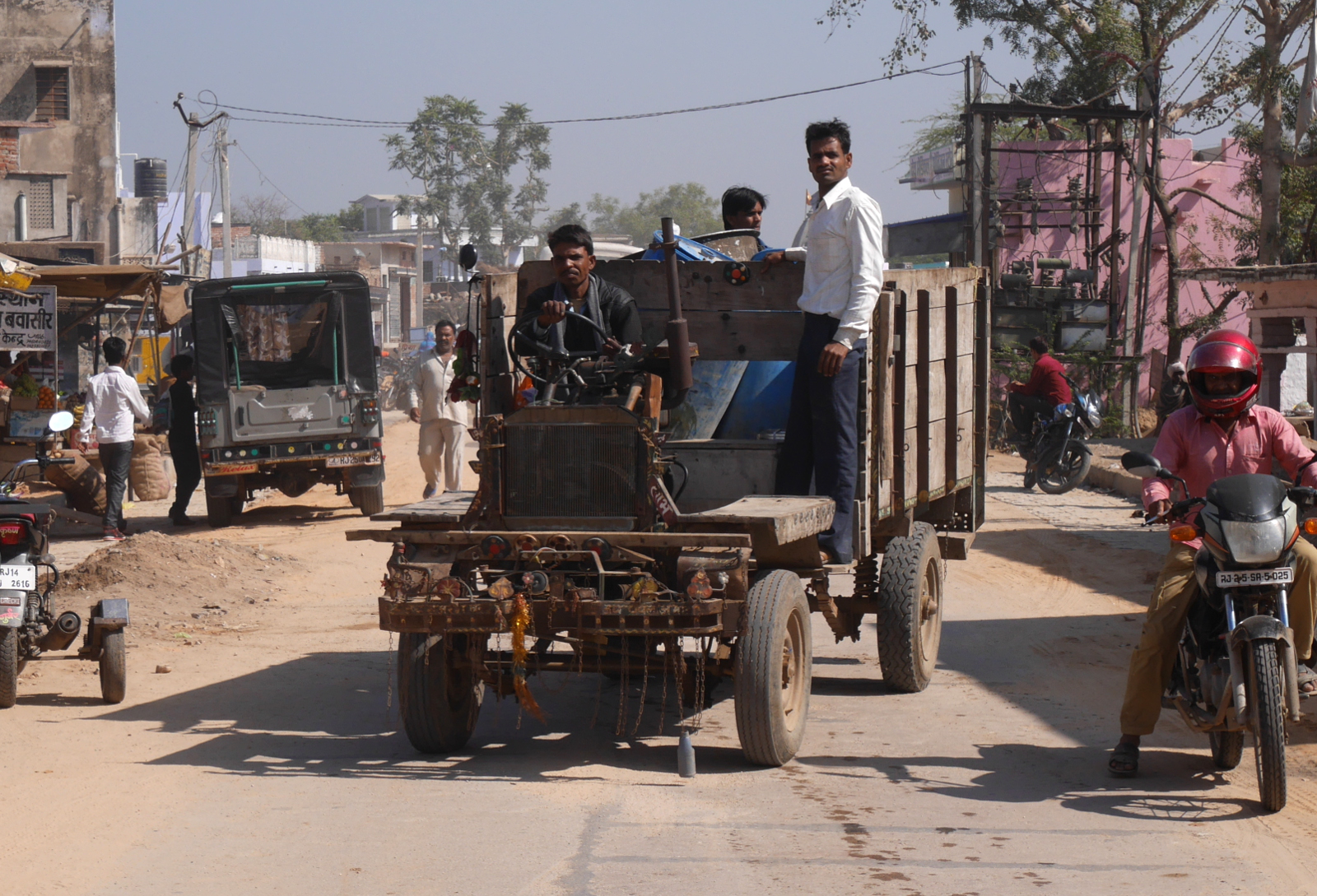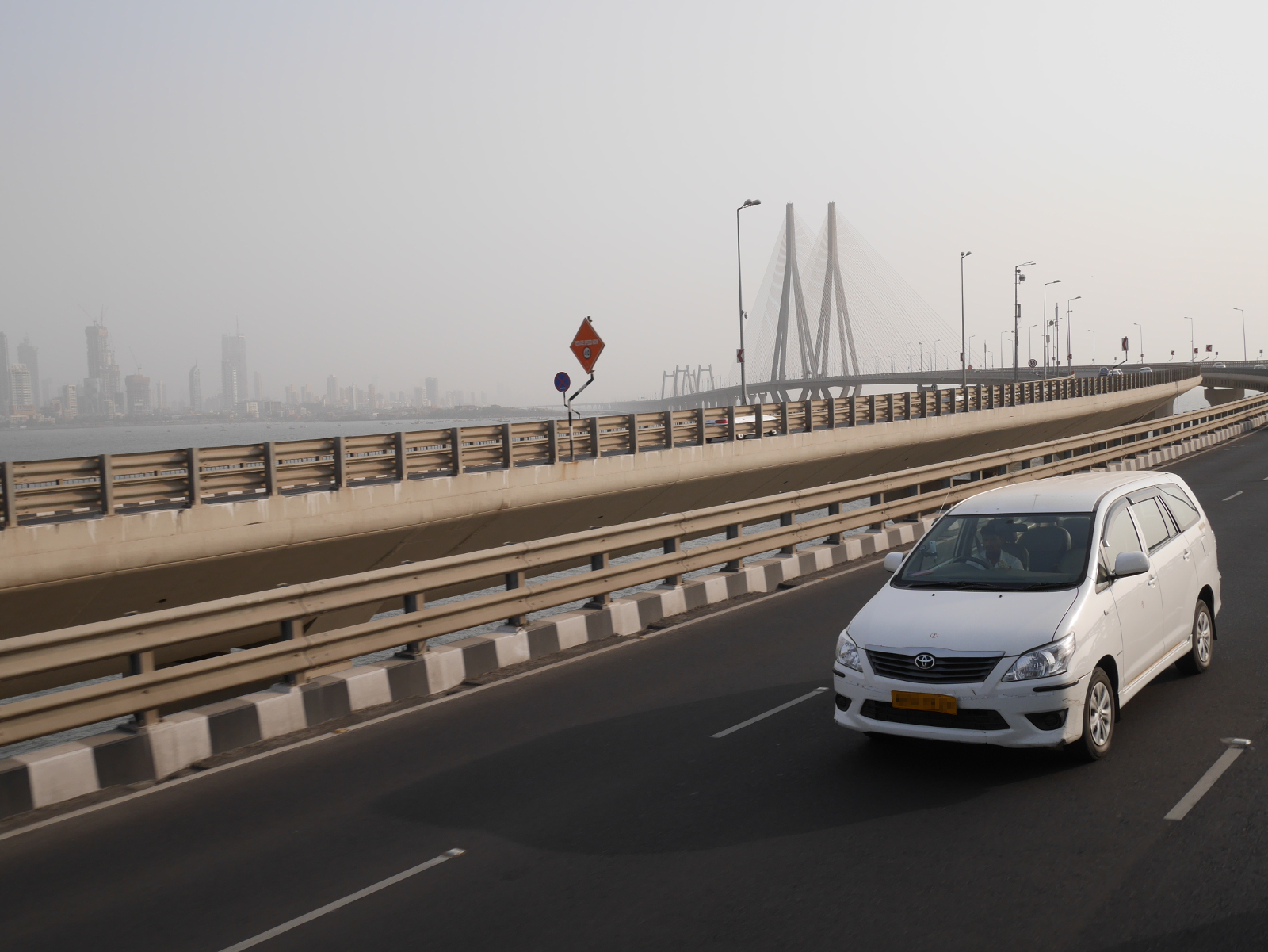Media in the car-saturated West—especially in the USA—have watched with some hand-wringing as the middle classes of large Asian countries such as China and India have increasingly been buying cars. At least in India, though, cars have so far failed to catch on to the extent that they did a century ago in the USA. What have caught on are two-wheelers: motorcycles and motor scooters. The profusion of two-wheelers in India hasn’t attracted much attention in the West, but I believe it has had a bigger influence in making India the country it is today.
Seven years ago, I spent my first sojourn in India at a school in the rural East Garo Hills district of Meghalaya. All of the teachers lived in the campus compound. Out of twenty-off families, only two had any sort of personal mechanized transportation: the principal had a car (a Maruti 800), and one of the teachers had a Bajaj motor scooter. Everybody else got around by walking, catching buses on the other side of the river, piling into the school sumo when it went to market, or bumming rides from the one teacher with a scooter.
Five years later, when I went back to Meghalaya to visit, there was only one family that didn’t have a scooter or motorcycle, and the others were asking when they would get one too. One of the teachers who now rode everywhere on his motorcycle spoke wistfully of the old days when everybody used to walk all the time.
In the early years of the twentieth century, when Americans first started buying cars in large numbers, optimistic car advocates claimed that automobility would usher in a new democratic age, when citizens could drive wherever they pleased, free from the tyranny of the railroads. Although cars did lead to new dependencies—on oil companies, tire companies, and of course the auto manufacturers themselves—cars did allow Americans to be more mobile than ever before.
Something similar is happening in India, except more with scooters and motorcycles than with cars. Thanks to scootermobility, residents of both city and country can go more places with more ease than ever before. Whole families pile onto single bikes to go on picnics. Teenagers and twenty-somethings escape the parental gaze to hang out in waste areas or old ruins on the edge of town.
Alongside the perks, scooters and motorcycles also come with many of the same pitfalls as cars, such as polluted skies and people who never walk anywhere anymore. There are also three shortcomings that aren’t shared by cars, which should give the builders of 21st-century India pause. The first is minimal safety protections. Motorcycles can go as fast as cars, but they have no room for crumple zones or roll bars. A seatbelt on a motorcycle would not do anyone any good. Second, two-wheelers have the loudest, shrillest horns of any vehicles. On any given day, they do more to create urban India’s noise pollution problem than anything else. And third, two-wheelers can insinuate themselves into places that cars could never go, thus endangering pedestrians and generally trampling cities in new ways. The pleasant pedestrian promenade at Connaught Place in New Delhi becomes not so pleasant when you constantly have to worry about getting run over by a scooter.




